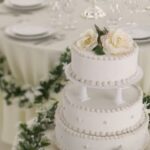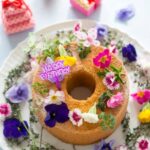Are you looking to add a personal and unique touch to your cake designs? If so, then learning how to make sugar molds for cake decorating is an essential skill to master.
Sugar molds are a versatile and customizable tool that can take your cake decorations to the next level, allowing you to create intricate designs with ease. Whether you are a beginner or an experienced baker, understanding the importance of sugar molds in cake decorating can open up a world of creative possibilities.
In this article, we will explore the process of creating your own sugar molds for cake decorating, from gathering the necessary tools and ingredients to expert tips and tricks on making the perfect mold. We will also take a look at creative ways to use sugar molds in cake design, troubleshooting common issues, and important safety precautions for handling and storing sugar molds properly. So, let’s dive into the art of sugar molds and elevate your cake decorating skills.
Getting Started
When it comes to cake decorating, sugar molds are an essential tool that allows bakers to add intricate details and designs to their creations. Whether you are a beginner or an experienced baker, learning how to make sugar molds for cake decorating can elevate your skills and take your cakes to the next level.
To get started, you will need a few key tools and ingredients. First and foremost, you will need granulated sugar, water, and tylose powder. These ingredients will form the base of your sugar molds. In terms of tools, you will require silicone molds in various shapes and sizes, cornstarch for dusting, a rolling pin, a sharp knife or blade, and food coloring if you want to add color to your sugar molds.
Once you have gathered all the necessary tools and ingredients, you can begin the process of creating your own sugar molds for cake decorating. The following section will guide you through the step-by-step process of making sugar molds that are perfect for adding beautiful details to your cakes.
Step by Step
Creating sugar molds for cake decorating is an essential skill for any baker or cake decorator. Whether you are making flowers, shapes, or intricate designs, having the right sugar molds can take your cake to the next level. Here’s a step-by-step guide on how to make sugar molds for cake decorating:
1. Choose your mold material: The most common materials for making sugar molds are silicone and gum paste. Silicone molds are flexible and reusable, while gum paste molds can be made from scratch and customized to your specific design.
2. Prepare your work area: Make sure your work surface is clean and dry before you begin making your sugar molds. This will help prevent any contamination that could affect the final result.
3. Create your mold design: If you are using gum paste, roll it out to the desired thickness and then press it into the mold to create the shape or design you want. If you are using a silicone mold, simply pour the melted sugar into the mold and allow it to set.
4. Allow the mold to set: Depending on the type of material you are using, you will need to allow your sugar mold to set before removing it from the mold. Follow the instructions for your specific material to ensure that it sets properly.
5. Carefully remove the mold: Once your sugar mold has set, carefully remove it from the mold and use as needed for decorating your cake.
By following these steps, you can create beautiful and intricate sugar molds for all of your cake decorating needs. Whether you are making simple shapes or detailed designs, having the right molds can elevate your cakes to a whole new level of artistry and creativity.
Tips and Tricks
Making sugar molds for cake decorating can add a unique and personalized touch to your creations. Whether you’re a beginner or an experienced baker, there are some expert tips and tricks that can help you achieve the perfect sugar molds for your cake designs. Here’s how to make sugar molds for cake decorating like a pro:
1. Use quality ingredients: Start with high-quality fondant or gum paste to ensure that your sugar molds turn out smooth and pliable. Avoid using expired or low-quality products, as they can affect the texture and consistency of your molds.
2. Knead thoroughly: Properly kneading your fondant or gum paste is essential for creating strong and durable sugar molds. Make sure to knead the mixture until it becomes smooth and elastic, as this will help prevent cracks and imperfections in your finished molds.
3. Get the right consistency: Achieving the right consistency for your fondant or gum paste is crucial for making successful sugar molds. If the mixture is too soft, it may lose its shape when removed from the mold, while too stiff of a mixture may be difficult to work with. Aim for a pliable yet firm consistency for best results.
4. Choose the right mold: Selecting the appropriate mold for your design is key to creating the perfect sugar mold for cake decorating. Consider using silicone or flexible plastic molds that are specifically designed for fondant and gum paste molding, as these materials make it easier to remove the molded shapes without damaging them.
By following these expert tips and tricks on how to make sugar molds for cake decorating, you’ll be well on your way to creating stunning and intricate designs that will impress any audience. Experiment with different colors, shapes, and textures to unleash your creativity and take your cake decorating skills to new heights.
Decorating Ideas
When it comes to cake decorating, the possibilities are endless with sugar molds. These versatile tools allow for creativity and innovation in designing unique and eye-catching cakes. Whether you’re a professional baker or just enjoy decorating cakes as a hobby, there are countless creative ways to use sugar molds to enhance your cake designs.
Customized Cake Toppers
One of the most popular ways to use sugar molds in cake design is by creating customized cake toppers. With the right molds and some practice, you can make intricate and personalized sugar sculptures that add a special touch to any cake. Whether it’s a birthday, wedding, or other special occasion, custom cake toppers are a great way to elevate your cake designs.
Embellishments and Accents
In addition to creating stand-alone decorations, sugar molds can also be used to make various embellishments and accents for cakes. From delicate flowers and leaves to ornate borders and patterns, these molded decorations can add texture and dimension to your cakes. By using different shapes, sizes, and colors of sugar molds, you can truly personalize your designs and create one-of-a-kind masterpieces.
Themed Decorations
Another creative way to use sugar molds is by incorporating themed decorations into your cake designs. Whether it’s for a holiday, seasonal event, or specific theme (such as sports or travel), there are endless possibilities for using themed sugar molds in your cake decorating. By carefully selecting the right molds and arranging them strategically on the cake, you can bring any theme to life with your creations.
With the endless creative options available when making sugar molds for cake decorating, there’s no limit to what you can achieve with these handy tools. Whether you’re using them for customized toppers, unique embellishments, or themed decorations, sugar molds offer an exciting way to elevate your cake designs and showcase your artistic abilities. So go ahead – let your imagination run wild and explore the many ways you can use sugar molds in your next cake decorating project.
Troubleshooting
Creating sugar molds for cake decorating can be a fun and creative way to add unique designs and decorations to your baked goods. However, it’s important to note that there can be some common issues that may arise during the process. Knowing how to troubleshoot these problems can help ensure that your sugar molds turn out perfectly every time.
One common issue when making sugar molds is that the mixture may become too sticky or dry, making it difficult to work with. To fix this, try adding a small amount of powdered sugar or cornstarch to the mixture and knead it until it reaches the right consistency. If the mixture is too dry, adding a few drops of water can help soften it up.
Another issue that can occur is that the sugar molds may not hold their shape once removed from the mold. This could be due to not packing the mixture tightly enough into the mold.
To avoid this problem, make sure to firmly press the mixture into the mold before allowing it to set. Additionally, letting the sugar molds sit at room temperature for a longer period of time before removing them from the mold can also help them retain their shape.
Lastly, air bubbles in the sugar molds can create imperfections in your designs. To prevent this, try tapping the filled mold on a flat surface several times to release any trapped air bubbles. You can also use a toothpick or skewer to carefully remove any air pockets from the mixture before allowing it to set.
These troubleshooting tips should help you overcome some common issues when making sugar molds for cake decorating. By following these steps, you can ensure that your sugar molds turn out just as you envisioned, adding a beautiful and professional touch to your baked creations.
| Common Issue | How to Fix It |
|---|---|
| Mixture too sticky or dry | Add powdered sugar/cornstarch for stickiness or water for dryness |
| Sugar molds losing their shape | Make sure to pack mixture tightly into mold and allow it to set longer |
| Air bubbles in the sugar molds | Tap filled mold on flat surface and remove air pockets with toothpick or skewer |
Safety Precautions
When it comes to handling and storing sugar molds for cake decorating, it is important to take certain safety precautions to ensure the quality and integrity of your creations. Proper handling and storage can significantly impact the lifespan and usability of your sugar molds, so it is essential to keep these tips in mind.
Handling Sugar Molds
When working with sugar molds for cake decorating, it is crucial to handle them with care. Sugar molds are delicate and can easily break or deform if mishandled. Always use clean, dry hands when handling sugar molds to prevent any moisture from affecting their shape or texture. Additionally, be gentle when removing the sugar molds from their packaging or when transferring them onto your cakes.
Storing Sugar Molds
Proper storage is key to preserving the quality of your sugar molds. Ensure that your sugar molds are stored in a cool, dry place away from direct sunlight or heat sources. It is best to store them in an airtight container or resealable plastic bag to prevent exposure to moisture, which can cause the sugar to become sticky and unmanageable.
Precautions for Long-Term Storage
If you plan on storing your sugar molds for an extended period, consider adding a small packet of silica gel desiccant inside the container to absorb any excess moisture. This will help maintain the integrity of the sugar molds over time. Additionally, make sure to label your container with the date of purchase or creation so that you can keep track of their freshness and usability.
By following these safety precautions for handling and storing sugar molds properly, you can ensure that they remain in top condition for all your cake decorating needs. Taking these extra steps will ultimately contribute to the success and quality of your decorative creations without compromising on taste or appearance.
Conclusion
In conclusion, mastering the art of sugar molds in cake decorating can elevate your creations to a whole new level. By understanding the importance of sugar molds and following the step-by-step process outlined in this article, you can create stunning and intricate designs to adorn your cakes. Whether you are a seasoned baker or just starting out, learning how to make sugar molds for cake decorating can add a touch of elegance and sophistication to your confections.
With the right tools and ingredients, along with expert advice on making sugar molds, you can hone your skills and create beautiful designs that will impress any guest or client. From simple flowers to intricate lace patterns, the possibilities for using sugar molds in cake design are endless. The creative ideas presented here offer inspiration for incorporating sugar molds into your own unique cake decorating style.
As with any new skill, there may be challenges along the way. However, by following safety precautions for handling and storing sugar molds properly, as well as troubleshooting common issues that may arise, you can overcome any obstacles with confidence.
Embracing the art of sugar molds in cake decorating opens up a world of creativity and allows you to showcase your talents in a truly dazzling way. So go ahead, gather your tools and ingredients, follow the expert advice provided here, and discover the beauty of using sugar molds to transform your cakes into works of art.
Frequently Asked Questions
How Do You Make Sugar Moulds?
To make sugar moulds, start by combining sugar and water in a saucepan over medium heat until it reaches a specific temperature. Then pour the mixture into molds, let it cool and harden before removing the sugar.
Can You Put Melted Sugar in a Silicone Mold?
Yes, you can put melted sugar in a silicone mold. The flexibility of silicone allows for easy removal of hardened sugar once it has cooled. Just be careful with the hot melted sugar to avoid burns.
How to Make Hard Sugar Cake Decorations?
To make hard sugar cake decorations, begin by melting granulated sugar on the stovetop until it reaches a high temperature and turns golden brown in color. Then carefully pour the liquid sugar onto a non-stick surface to cool and harden before breaking it into decorative shapes for cakes.

Welcome to my blog about home and family. This blog is a place where I will share my thoughts, ideas, and experiences related to these important topics. I am a stay-at-home mom with two young children. I hope you enjoy reading it! and may find some helpful tips and ideas that will make your home and family life even better!





